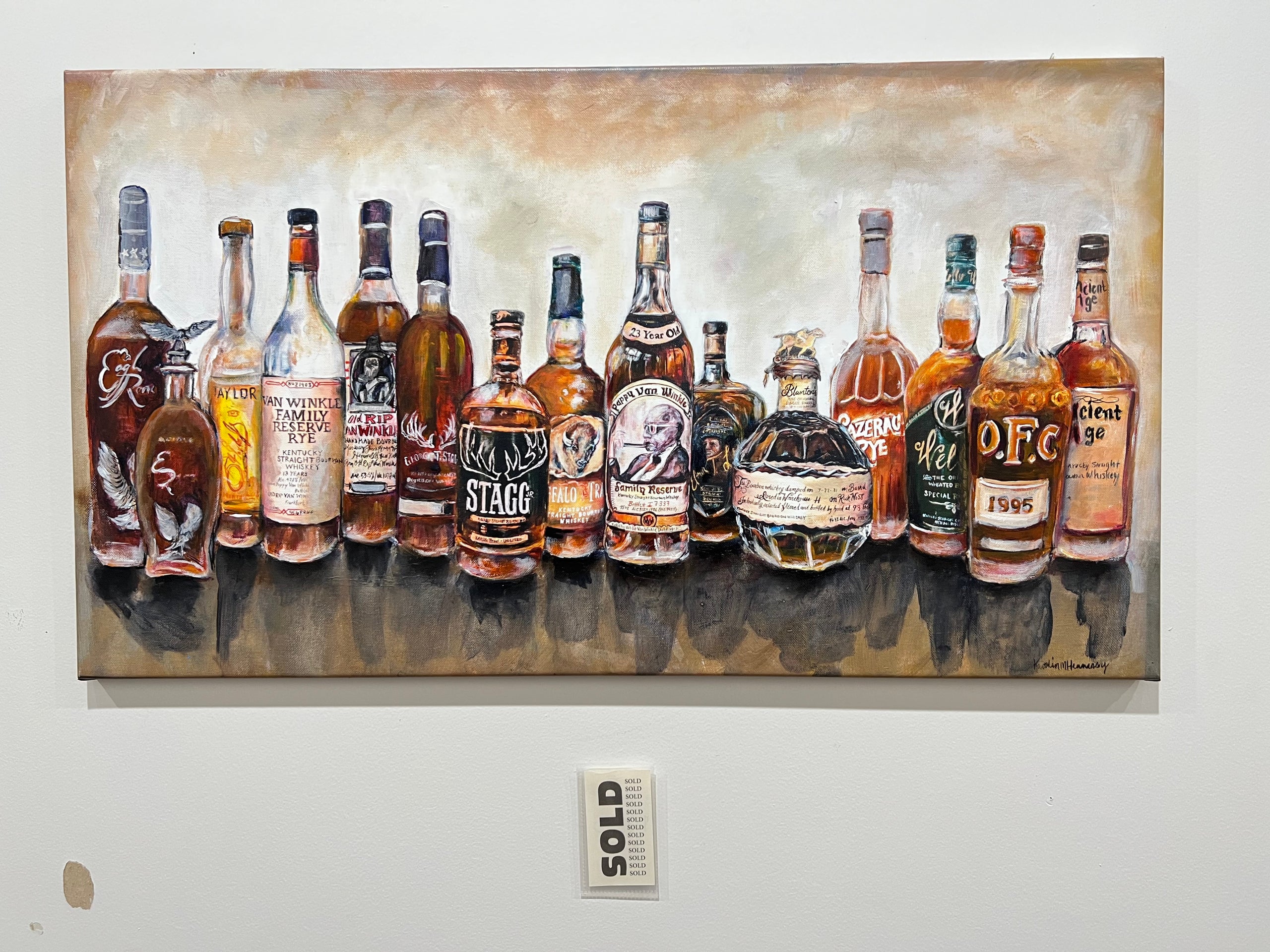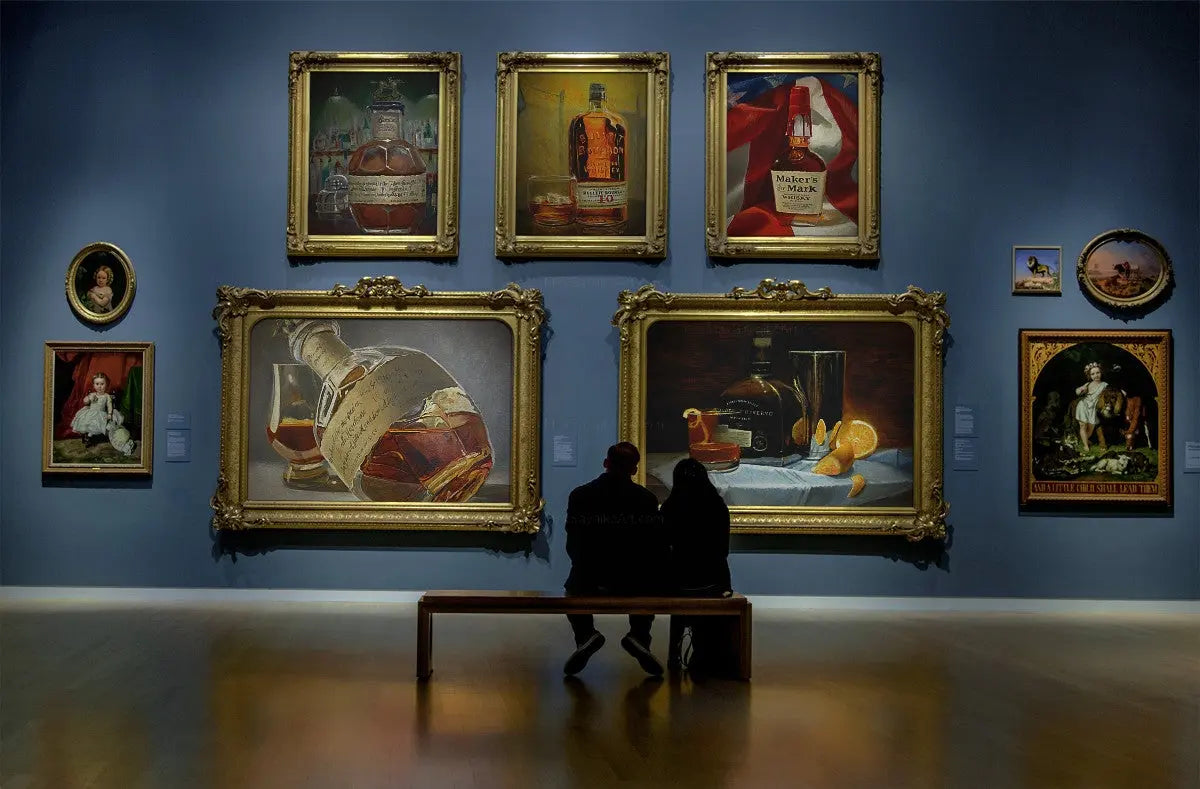The Importance of Whiskey Art in Celebrating Heritage and Workmanship in the Beverage Industry
The complex partnership between bourbon art and the celebration of heritage and workmanship within the drink industry can not be overstated. Through attentively created labels and bottles, scotch brand names envelop their historic origins and the artisanal skills that define their production techniques. This creative measurement not only improves market allure however also functions as a channel for social storytelling, promoting a much deeper link between the customer and the craft. As we explore the different facets of this topic, interesting inquiries about the effect of contemporary trends on standard methods occur, triggering further exam.
The Historic Roots of Whiskey
At the heart of bourbon's appeal lies a rich tapestry of historical origins that map back to old civilizations. The origins of bourbon can be connected to the purification practices of the Sumerians and Babylonians around 2000 BCE, where very early kinds of fermented grain drinks began to emerge. It was in the Center Ages that the art of distillation progressed substantially, particularly in Ireland and Scotland, leading to the creation of scotch as we understand it today.
The term "whiskey" itself originates from the Gaelic word "uisce beatha," indicating "water of life." This phrase underscores the social importance of bourbon in Celtic cultures, where it was often connected with routines, parties, and common bonding. By the 15th century, purification ended up being an acknowledged craft within monastic areas, paving the method for the facility of legal distilleries.
As trade courses broadened, bourbon's appeal grew, transcending local borders and catching the interest of lovers worldwide. Limited Edition. This historical journey mirrors not just the workmanship behind whiskey production but additionally its indispensable role in cultural and social contexts, noting it as a substantial drink throughout history
Artistic Expression in Branding
Whiskey branding stands as an engaging crossway of artistry and business, where aesthetic identity plays an important duty fit consumer perception. The aesthetic appeals of bourbon tags, product packaging, and advertising products mirror not just the brand's story however also its core worths and heritage. Via artistic expression, distilleries convey a story that resonates with customers, evoking feelings and stimulating connections.
Using color, typography, and images in branding serves to set apart items in a saturated market. As an example, standard concepts might stimulate a feeling of credibility and workmanship, while modern layouts can indicate advancement and forward-thinking. This critical imaginative direction boosts brand recognition and loyalty, allowing consumers to create a personal partnership with the bourbon they select.
Additionally, imaginative expression in branding commonly works as an event of regional heritage. Distilleries often integrate regional icons or historical referrals right into their layouts, developing a local color that invites consumers to participate in a broader cultural experience. Ultimately, the virtuosity behind scotch branding not just enhances aesthetic appeal however additionally enriches the general narrative of the brand, fostering a deeper admiration for the craftsmanship and heritage ingrained in each container.
Craftsmanship in Container Style
The artistry obvious in whiskey branding prolongs beyond aesthetic identification to include the workmanship associated with container layout. Each bottle works as a vessel not just for the spirit within, yet also for the story it outlines its practice, quality, and beginning. The design procedure requires precise interest to information, as aspects such as form, closure, and material contribute dramatically to the general assumption of the whiskey.
Workmanship in bottle layout involves selecting high-quality glass that can boost the bourbon's color and clarity, while additionally giving a responsive experience for the consumer. The shape of the bottle must be both visually appealing and practical, more helpful hints typically showing the heritage of the brand. Many distilleries choose distinct forms or printed logo designs that evoke a feeling of authenticity and background.
Moreover, the tag style and typography play a crucial role in interacting the brand name's narrative. Limited Edition. A well-crafted bottle not just mesmerizes the consumer's eye but also strengthens the brand name's commitment to high quality and custom. By doing this, the craftsmanship of bottle style comes to be an important aspect of the whiskey experience, merging artistry with a profound regard for heritage
Cultural Value of Scotch Art
Commemorating tradition and craftsmanship, the cultural importance of bourbon art transcends mere appearances, intertwining with the social and historical narratives of the areas where it comes from. Each bottle look at here works as a canvas, portraying the one-of-a-kind tales, mythology, and customs that have formed regional whiskey-making techniques. The detailed styles commonly mirror the heritage of the distillers, including symbols and themes that reverberate with the culture and values of their communities.

On top of that, bourbon art plays a vital function in public gatherings and celebrations, acting as a substantial link in between people and their shared experiences. By valuing the artistry in bourbon product packaging, customers cultivate a much deeper understanding and regard for the craft, inevitably enriching their pleasure of the beverage itself.
Modern Trends in Bourbon Discussion
In the last few years, the presentation of scotch has actually advanced to reflect contemporary preferences and patterns while still recognizing traditional craftsmanship - Whiskey Art. Distilleries are significantly concentrating on visual components that improve the general drinking experience, bridging the gap in between heritage and modernity
Cutting-edge bottle designs have actually emerged, commonly incorporating lasting products and artistic tags that tell engaging stories. Many brands currently collaborate with local musicians, instilling their items with one-of-a-kind aesthetic expressions that resonate with customers. Furthermore, limited-edition launches are often packaged in collectible containers, why not try this out including value and appeal for lovers.

Conclusion
In conclusion, scotch art acts as a crucial avenue for expressing the heritage and craftsmanship integral in the drink sector. Through intricate branding, innovative bottle styles, and culturally considerable imaginative elements, scotch brand names successfully honor their customs and get in touch with consumers. This artistic story not just raises the gratitude of scotch however additionally enhances neighborhood identity and pride among manufacturers. Inevitably, scotch art plays a vital function in preserving and commemorating the rich cultural tapestry of whiskey-making.


Workmanship in bottle style entails choosing top notch glass that can improve the whiskey's color and quality, while also giving a responsive experience for the customer. In this way, the craftsmanship of container style comes to be an essential element of the whiskey experience, combining artistry with an extensive regard for heritage.
In verdict, scotch art offers as an important channel for sharing the heritage and craftsmanship integral in the drink market.